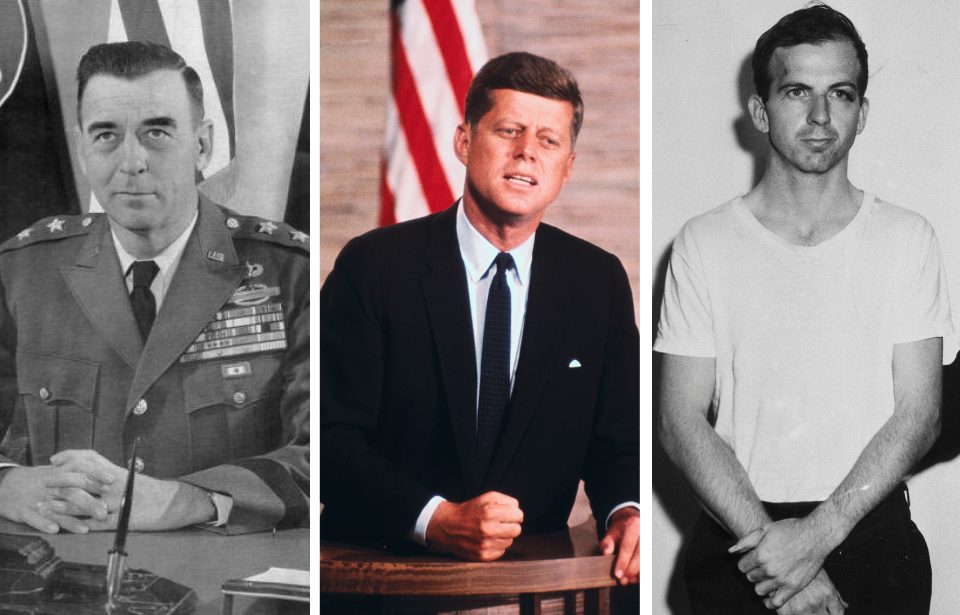Lee Harvey Oswald is known around the world today as the man who killed American president, John F. Kennedy on November 22, 1963, in Dallas, Texas. However, a lesser-known fact surrounding the JFK assassination is that seven months before Oswald killed Kennedy, he attempted to assassinate United States Army General Edwin Walker. We break down the full story here.
Who was Edwin Walker?
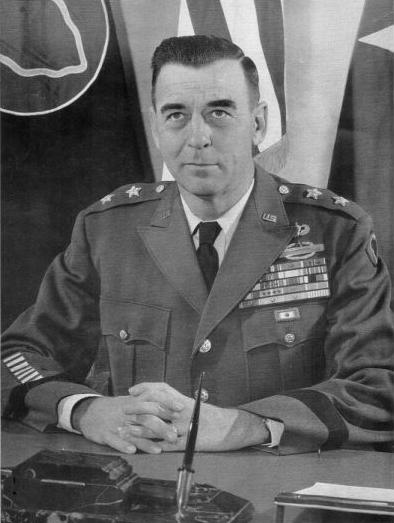
Edwin Walker was a United States Army officer who served in the Second World War and the Korean War. After his time in combat, Walker was assigned as commander of the Arkansas Military District in Little Rock, Arkansas.
By 1957, many state universities in Arkansas and smaller schools had already been integrated. However, violent protests occurred in September 1957, when nine Black students decided to attend the all-white Central High School in Little Rock.
On September 2, 1957, the segregationist governor of Arkansas, Orval Faubus, announced that he would order the Arkansas National Guard to surround the high school to prevent the Black students from entering. In response, Federal Judge Ronald Davies issued a ruling mandating that integrated classes would proceed. Despite this, on September 4, 1957, the nine Black students who enrolled in the Central High School were denied entry by armed troops in the Arkansas National Guard.
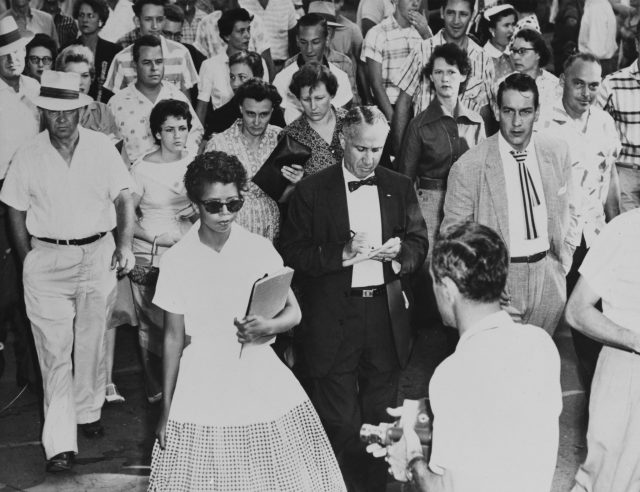
Governor Orval Faubus eventually removed the Arkansas National Guard from the high school, but left security up to local police, The nine students attempted to enter the school once again on September 23, which resulted in a riot erupting.
On September 23, 1957, President Dwight D. Eisenhower issued Executive Order 10730, which put the Arkansas National Guard under federal authority, and sent one thousand U.S. Army troops from the 101st Airborne Division to Little Rock to maintain order while Central High School was desegregated.
So, where does Edwin Walker come into this event? Because Walker was commander of the Arkansas Military District, it was his job to implement President Eisenhower’s Executive Order 10730. Walker obeyed orders and successfully integrated Little Rock High School, but he made it clear that using federal troops to enforce racial integration went against his conscience and beliefs.
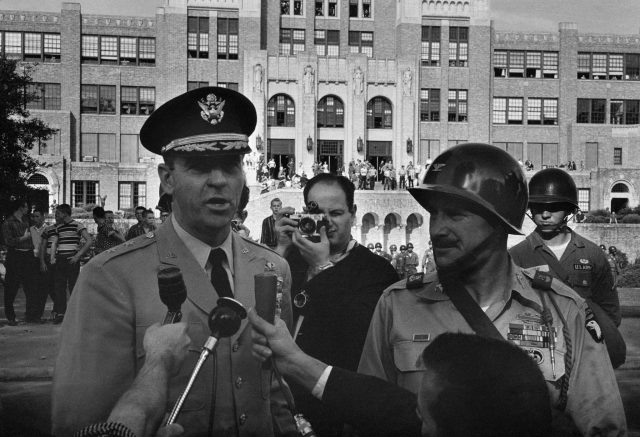
After the Little Rock incident, Walker increasingly began listening to an anti-communist radio show hosted by segregationist preacher Billy James Hargis and oil tycoon H.L. Hunt. Walker’s views became increasingly conservative, and in 1959 he met with Robert Welch, the founder of the John Birch Society.
The John Birch Society was an ultraconservative far-right organization founded in 1958 that supported anti-communism and social conservatism. One of the prominent theories that the John Birch Society pushed was that President Eisenhower was a Communist. As a result of these theories and his increasingly ultra-right beliefs, on August 4, 1959, Walker submitted his resignation to the U.S. Army. President Eisenhower, however, denied Walker’s request and instead offered him the command of 10,000 troops in the 24th Infantry Division in Augsburg, Germany.
Edwin Walker and the Kennedys
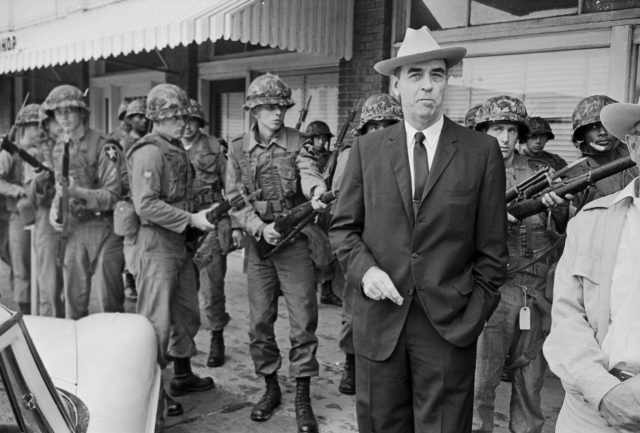
In 1961, Walker was accused by an independent American-owned newspaper, Overseas Weekly, of distributing John Birch literature to his troops, and publicly stating that former president Harry Truman was “definitely pink.”
After the publishing of the Overseas Weekly article, the Army relieved Walker of his command, and President John F. Kennedy ordered an investigation into the disgraced general. This investigation revealed that Walker had violated the Hatch Act, which prohibits federal employees from engaging in any sort of political activity while on the job. For the second time, Walker resigned from the Army- this time, President Kennedy accepted his resignation.
Explaining his reasons for quitting the Army, Walker stated that he “must find other means of serving my country in the time of her great need. To do this, I must be free from the power of the little men, who in the name of my country, publish total service to it.” Walker added that it was “my purpose now, as a civilian, to attempt to do what I Have found it no longer possible to do in uniform.”
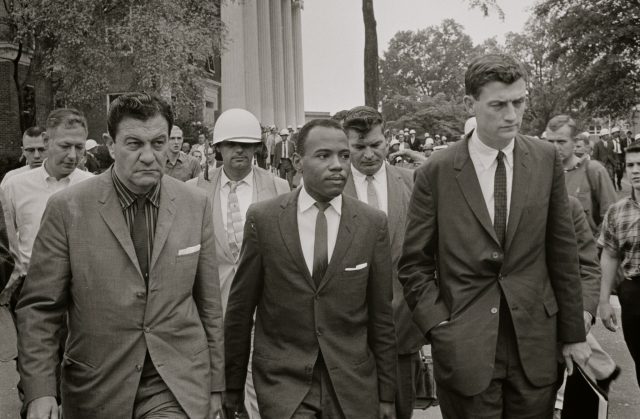
In early 1962, Walker began a career in politics, making speeches with Billy James Hargis, denouncing Communism both abroad and at home and political liberalism in the United States. In February 1962, Walker became a Democratic candidate for the governor of Texas but ultimately finished last among six other candidates in the Democratic primary election.
In September 1962, Walker was once again in the news for leading resistance to James Meredith’s 1962 enrolment at the University of Mississippi. On September 26, Walker broadcast the following message on several different radio stations: “Mississippi, it is time to move. We have talked, listened and been pushed around far too much by the anti-Christ Supreme Court… The time is when the President of the United States commits or uses any troops, Federal or State in Mississippi! The last time in such a situation, I was on the wrong side. That was in Little Rock, Arkansas in 1957-1958. This time, out of uniform, I am on the right side.”
On September 30, 1962, a crowd led by Edwin Walker turned violent while protesting Meredith’s enrolment to Ole Miss. President John F. Kennedy brought in the Mississippi National Guard and Army troops to stop the riots, but two people wound up dead.
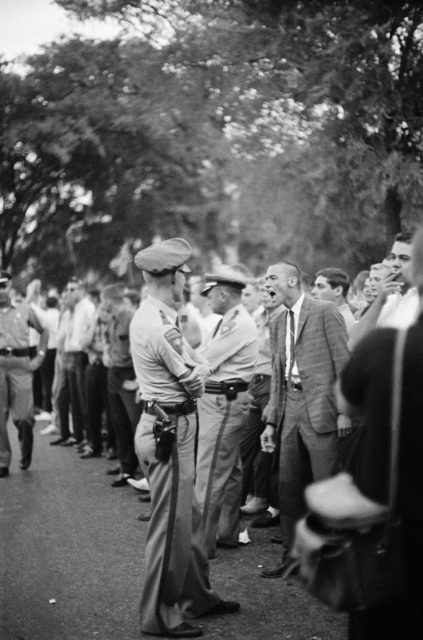
After the riots, Attorney General Robert Kennedy called for Walker’s arrest, and he was charged with insurrection. The Justice Department asked that Walker be committed for a psychiatric evaluation, as the chief psychiatrist at the Federal Prison Bureau stated that Walker’s past actions indicated paranoid mental disorders.
To Walker, however, he was a political prisoner at the hand of the Kennedys. Walker was eventually released on a $50,000 bond. Upon release, he was met by a crowd of about 200 supporters at Dallas Love Field, waving confederate flags and holding signs that read “Walker for President ’64.” In January 1963, a federal grand jury declined to indict him and his charges were dismissed.
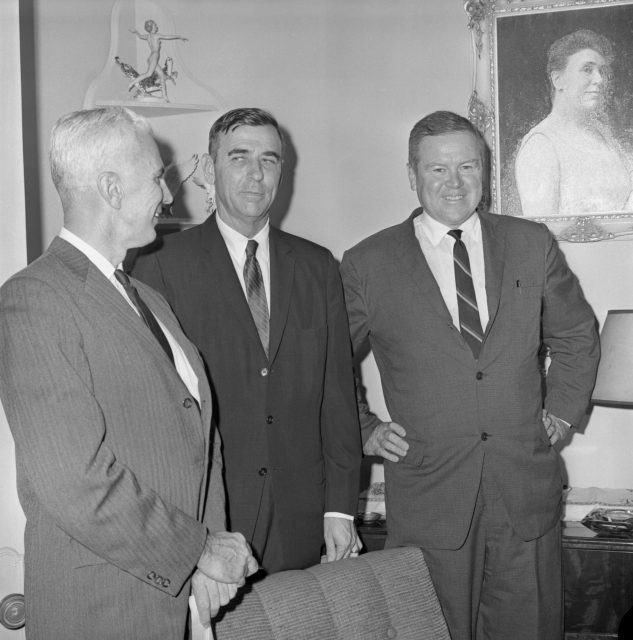
In February 1963, Edwin Walker joined anti-communist televangelist Billy James Hargis on a tour to warn the American people about “the enemy within and without.” Both men hated Communism, but arguably hated President Kennedy more. On this public tour, Edwin Walker begins to publicly call on Kennedy to use military might to remove Fidel Castro from power in Cuba, and to assassinate Castro.
Walker called Kennedy’s presidency a dictatorship, and compared the Kennedy brothers to the Castro brothers in Cuba, stating that “Jack has Bobby and Castro has Raul.” It is safe to say by 1963, Walker was publicly rambling about his hatred and conspiracies against the Kennedys to anyone that would listen.
Lee Harvey Oswald attempts to assassinate Edwin Walker
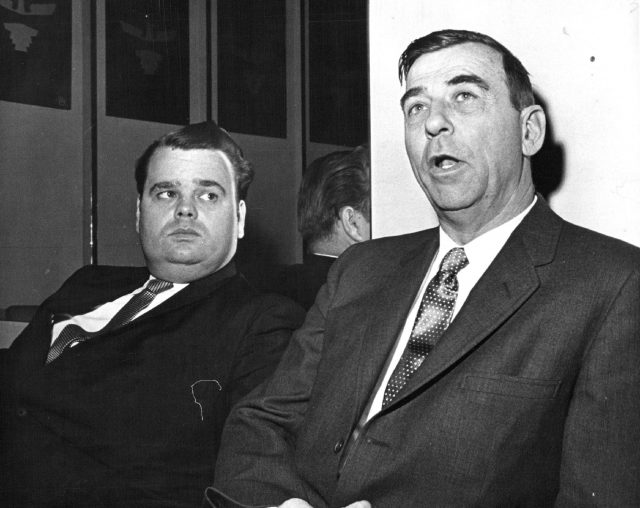
Walker’s speeches were heavily reported in local newspapers. Presumably, Walker’s stance upset Lee Harvey Oswald, who although he hated Kennedy, was big into Communism and didn’t agree with the public call to assassinate Castro in Cuba. In March 1963, he ordered a Carcano rifle under the alias “A. Hidell.” This rifle was featured in the now-famous Lee Harvey Oswald photo that Oswald’s wife, Marina, took of him in their backyard.
According to the Warren Commission, Lee Harvey Oswald was observing Edwin Walker on the weekend of March 9-10, 1963. However, the actual assassination attempt would take place a month later, on April 10, 1963.
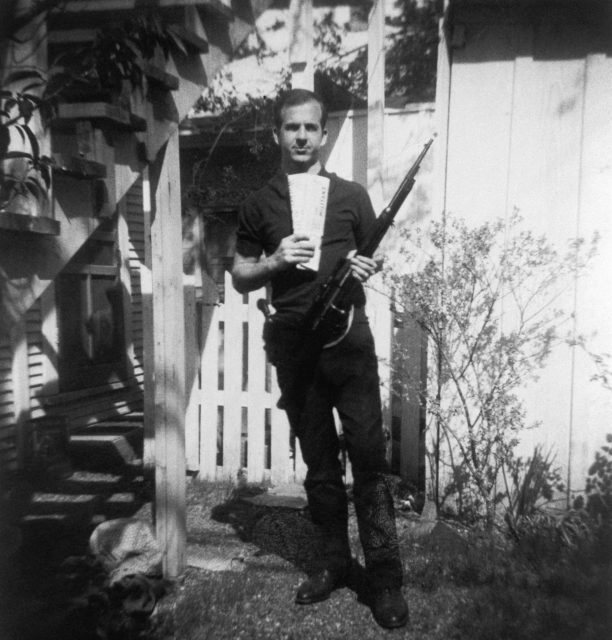
On April 10, 1963, Walker was sitting at a desk in his dining room when a bullet whizzed past his head and struck the wooden frame of his dining room window. Although the bullet missed Walker, his forearm was injured by fragments from the window.
There were no witnesses to this assassination attempt, but a young 14-year-old boy in a neighboring house claimed that he saw two men in separate vehicles drive out of a church parking lot next to Walker’s home immediately after the shooting. A bullet was also recovered from Walker’s home but in the absence of a weapon, the bullet did not pose a lot of value to the investigation.
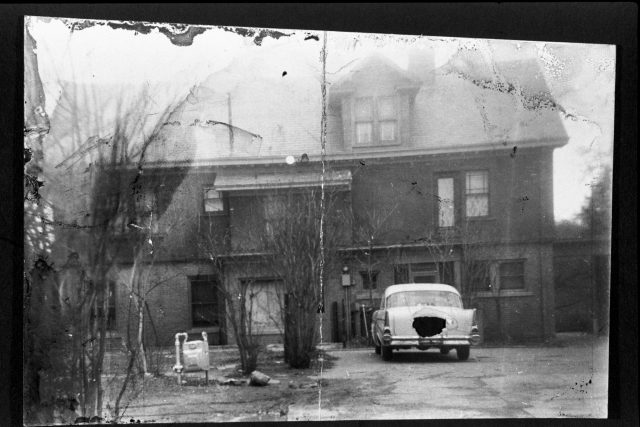
More from us: White House Delays Release of JFK Assassination Files
The real connection between Oswald and Walker came from Oswald’s widow, Marina. Marina told the Warren Commission that he returned on the night of April 10 and told her that he had been planning the assassination attempt for two months. He then showed her a notebook containing photographs of Walker’s home and a map of the house’s area. According to Marina and the Warren Commission, Lee Harvey Oswald wanted to kill Edwin Walker because he was “an extremist.”
In 1993, Edwin Walker died of lung cancer.
